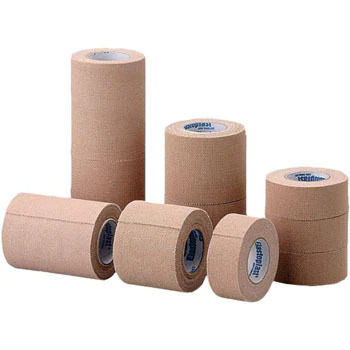Project Report For Elastic Tape
Introduction
Project report for Elastic Tape is as follows.
Elastic tape, often referred to as kinesiology tape, kinesiology therapeutic tape, Kinesio tape, k-tape, or KT, is used to treat a variety of physical problems, including sports injuries, and is said to lessen pain and disability. The purpose of elastic taping is to support and stabilize the injured muscles and joints, hence promoting the body’s natural healing process. This kind of tape doesn’t limit bodily motion and can extend the positive effects of manual treatment administered by rehabilitation experts like physical therapists.
There are many widths available in woven fabrics. Most clothing and make-up items are manufactured from fabric that is 36″ broad or wider. We frequently encounter the material for bed sheets (96″ to 120″), suiting (60″ or 63″), or dress material (36″ or 48″). The breadth of woven fabric products with a narrower width, such as straps, bands, laces, labels, ribbon, hooks & loops (Velcro), etc., can range from 10 mm to 300 mm. Although the weaving procedure for wide and narrow cloth is identical, there are separate machinery utilized for each part. A variety of machines offering various features in the woven fabric of all widths have been developed as a result of rising consumer expectations and technological advancements.

Product & Its Application Of Elastic Tape
Elastic tapes are classified as Narrow Fabrics. The narrow fabrics can be elastic or inelastic. While inelastic narrow-width fabrics are used in labels, hand tags, straps, shoe laces, Niwars, and other applications, elastic narrow-width fabrics, known as Elastic Tapes, are used to keep garments in place, such as undergarments, trousers, top sleeves, waistbands, wrist bands, hospital products, hair bands, and so on.
The ability of an elastic tape to stretch under force, remain firm for a longer period of time, and return to its original shape after force is removed is its most important feature, leading to its wide range of applications. An elastic tape eliminates the need for an exact size in any application, allowing manufacturers to be more flexible with product sizes while providing consumers with the convenience of comfort and fit.
Project Report Sample Of
Elastic Tape
Get Completely Custom Bankable Project Report
Row Material Required For Elastic Tape
In the past, cotton or synthetic yarn was used as the weft and primarily rubber core was used to create elastic tapes. Rubber has been replaced with Lycra or Spandex due of technological advancements. Rubber, bleached and/or dyed cotton yarn, dyed synthetic yarn, and Lycra or spandex yarn are examples of raw materials that may be used, depending on the design, pattern, and construction of the finished product. Most Indian industrial cities have easy access to these commodities.
Manufacturing Process Of Elastic Tape
There are three main ways to make elastic tapes: braiding, knitting, and weaving. Braiding includes moving rubber and yarn diagonally from side to side, going under or over one another to form a net of rubber and yarn. Although this tape has excellent stretchability, when stretched it becomes narrower. It can be used for specific things, such trunk legs. This elastic is occasionally used in the waistband of inexpensive clothing. Rubber and yarn are used in the knitting or crocheting process to create garments.
Knitting is more economical and easier than weaving since it eliminates additional steps in the fabric-making process. Even though the knitted elastic’s appearance and feel are not fantastic, the presence of naked rubber offers it good stretch characteristics. The newest and most popular type of elastic utilized by customers is woven elastic. Rubber warp beams coated in the yarn are created and set up on needle looms. Each loom has a number of heads, and each head creates narrow cloth with a range of widths based on the loom’s technical requirements. In the west, cotton or synthetic yarn is utilised. Modern needle looms are equipped to weave a trademark or logo into the tape. Elastic tape can be woven into patterns using looms that are already available on the market.
Market Potential Of Elastic Tape
Expenses

Product Cost Breakup

Reveneue Vs Expenses

Market Trend

During the forecast period, the Global Elastic Rubber Tapes Market is expected to grow at a CAGR of 4.22%. The global elastic rubber tapes market is expected to reach $5 billion by 2027.
China’s market share in global apparel exports was 40% in 2019 and is expected to rise further in the forecast period. India is the second most important country, accounting for 11% of textile and clothing exports in mercantile shipment in 2020. Vardhman Textile is India’s largest conglomerate, with a yearly revenue of USD 700 million.
The report’s goal is to provide industry stakeholders with a comprehensive analysis of the global Elastic Rubber Tapes Market. The report analyses complicated data in simple language and presents the past and current state of the industry, as well as forecasted market size and trends. The report examines all aspects of the industry, including a detailed examination of key players such as market leaders, followers, and new entrants.

